This article was co-authored by Carlotta Butler, RN, MPH and by wikiHow staff writer, Jennifer Mueller, JD. Carlotta Butler is a Registered Nurse in Arizona. Carlotta is a member of the American Medical Writers Association. She received her Masters of Public Health from the Northern Illinois University in 2004 and her Masters in Nursing from the University of St. Francis in 2017.
There are 10 references cited in this article, which can be found at the bottom of the page.
This article has been viewed 27,560 times.
If you experience frequent heartburn, exercise can help you control it. Since being overweight increases your risk of suffering heartburn, you also may want to exercise to lose excess weight or to maintain your weight at a healthy level. However, it's important to keep your exercise moderate, rather than intense. Incorporate exercise into a healthy lifestyle, making changes to your habits where appropriate to reduce and control heartburn.[1] [2]
Steps
Choosing Heartburn-Friendly Exercises
-
1Focus on low-impact workouts. Vigorous, intense exercise can actually exacerbate, rather than control, your acid reflux. Particularly if you're a beginning exerciser, taking a brisk walk around your neighborhood is a good place to start.[3]
- Weight lifting, particularly at the level of intensity associated with body building, is not recommended for people who suffer from frequent heartburn.
- If you do want to do strength training, try using low-impact exercise machines rather than working out with a weight bench or with free weights.
- Walking or light jogging is a good way to exercise if you have heartburn. However, keep in mind that jogging or running can upset your stomach because of the jostling and bouncing involved.
- Yoga or pilates also can be good forms of exercise if you suffer from frequent heartburn. You may want to avoid poses that require you to recline or bend at the waist, or that cause undue pressure to your abdomen, as these may upset your digestive system.
-
2Walk every day to keep active. Walking is generally an easy way to keep your body active and increase your overall fitness. It also is an easy exercise to fit in to your everyday life, even if you don't have time for an extensive workout regimen.[4]
- For example, when you're running errands, park in a space further away so you can get a little walking in, rather than hunting for the closest possible parking spot.
- When you have a choice, take the stairs instead of using the elevator.
- If you're a beginner, start with a 5- or 10-minute brisk walk per day. Gradually work up to a 20-minute brisk walk each day.
- To work walking into your regular routine, go for a brief walk around the block for 5 or 10 minutes within an hour or two after each meal.
Advertisement -
3Do breathing exercises to strengthen your lower esophageal sphincter (LES). When you have heartburn, particularly if you've been diagnosed with gastroesophageal reflux disease (GERD), strengthening your LES and diaphragm can decrease your heartburn.[5] [6]
- One important breathing exercise is to practice "diaphragmatic breathing." To do this, expand your abdomen, and relax your abdominal muscles as you inhale. Then contract your abdominal muscles as you exhale to force the air out.
- This breathing exercise makes your breathing conscious and activates your diaphragm. In contrast, typically when you breathe you simply use the muscles in your chest wall.
- As you practice diaphragmatic breathing, place one hand on your chest and the other on your abdomen.
- As you inhale, check to see that the hand on your abdomen is rising higher than the hand on your chest. This signifies that you are drawing air into your lungs with your diaphragm.
- Inhale and exhale slowly and completely. You should complete this exercise two or three times a day. Each time you perform this exercise, take at least 20 deep, conscious breaths.
-
4Plan to exercise for a half-hour a day. Maintaining a generally active lifestyle is essential to controlling heartburn. This doesn't mean that you have to exercise for 30 minutes straight. However, you should try to fit in physical activity throughout the day.[7]
- If you're a beginner who's never done much concentrated exercising before, starting with a 30-minute exercise routine can be too stressful for your body and actually increase your heartburn.
- However, fitting in a few minutes of exercise throughout the day will add up. For example, if you went for a 10-minute walk in the morning, another around lunch time, and a third in the evening, that would add up to 30 minutes.
- You might want to consider downloading a fitness or exercise app for your smart phone so you can better track your progress, particularly if you're trying to spread your exercise out over the course of the day.
-
5Consult your doctor. If you want to control your heartburn through exercise, talk to your general physician or your gastrointestinal specialist about which particular exercises and routines will work best for you.
- Certain exercises or types of exercises may not be helpful for you, based on your particular situation and the details of your chronic heartburn.
- Your doctor will better understand the causes of your heartburn and be able to point you toward exercises that will help you.
Managing Heartburn during Your Workout
-
1Wait two hours after a meal to exercise. You can avoid heartburn during your workout by putting enough time between your meal and your workout to allow your food to digest properly.[8]
- While many people can benefit from having a small snack about a half hour before exercising, particularly if they plan to engage in more strenuous exercise, this is not recommended if you suffer from chronic heartburn.
- To avoid heartburn during exercise, it's generally best to exercise on an empty stomach or nearly empty stomach.
- Allow food you eat at meals to digest before you start even moderate exercise. Keep in mind this doesn't necessarily apply if you're just taking a brief 5- or 10-minute walk. This sort of activity normally can be done without worrying about when you last ate.
-
2Exercise in an upright position. Exercises that require you to perform them from a reclining position can exacerbate heartburn. This includes exercises that require you to bend over from the waist, such as sit-ups or crunches.[9]
- Walking or biking are good exercises for people with frequent heartburn precisely because you can do them in an upright position. You may have problems with acid reflux if you use a recumbent stationary bike.
- Many basic exercises can be modified for people suffering from acid reflux, so they can continue to work out the same muscle groups without being bothered by the pain of heartburn.
- If you plan to do strength training, you'll generally have fewer problems with heartburn if you lift weights from a standing position or sitting upright at a weight machine, rather than reclining as you would to do exercises such as bench presses.
-
3Avoid exercises that put too much pressure on your abdomen. Many ab workouts and strength-training exercises put pressure on your abs that can cause a flare-up of chronic heartburn.[10]
- This is not only true with exercises such as sit-ups and crunches, but also exercises that require you to bend at the side or the waist from a standing position.
- Rowing machines also can put significant pressure on your abdomen, potentially causing acid reflux.
- If you're looking for a good exercise to strengthen your core without exacerbating your heartburn, try doing planks. Get on the floor in a pushup position, then bend your elbows 90 degrees and put your hands and forearms flat on the floor.
- When your elbows are directly beneath your shoulders and you're on your toes, your body should look like a plank (hence the name of the exercise). Hold the position as long as you can, breathing into it. Aim to increase your time with each plank you do.
- Deep breathing exercises also can strengthen your core muscles, although it will take you a lot longer to get a trim tummy than if you were doing sit-ups or crunches every day.
-
4Drink water during your workout. Drinking plenty of water during your workout will help to keep you hydrated and it may also improve your digestion.[11]
- Keep a water bottle with you during your workout and take sips throughout your workout as needed.
- Make sure to drink a glass or two of water after your workout as well.
Modifying Your Behavior
-
1Eat several small meals throughout the day. Provided your daily schedule can accommodate, you'll have fewer problems with heartburn if you consume small meals five or six times a day rather than eating three big meals.
- Ideally, you can control heartburn by eating small portions once every two hours, with your last meal occurring at least two or three hours before you plan to go to sleep.
- In some cases, your work schedule won't permit you to change your eating schedule significantly.
- If that's the situation for you, focus on eating smaller portions at meal times and try to supplement your smaller meals with snacks throughout the day.
- Even if you're not able to alter your eating schedule significantly, you still should avoid working out within two hours of eating, and avoid lying down within two or three hours of eating.
-
2Quit smoking. If you are currently a smoker, make a plan to quit as soon as possible if you want to control your heartburn. Tobacco use of any sort weakens and relaxes your lower esophageal sphincter, which exacerbates heartburn.[12]
- Smoking also causes you to intake air, which can cause pressure in your stomach and exacerbate acid reflux.
- Other tobacco use such as dipping or chewing can damage your esophagus, wearing your esophageal muscles and leading to heartburn.
- If you're ready to quit smoking, talk to your doctor and develop a healthy smoking cessation plan that can reduce the chances you'll return to smoking.
-
3Limit your consumption of alcohol and caffeine. Both caffeine and alcohol can cause or worsen chronic heartburn. Have a cup of coffee in the morning if you must, but eliminate soft drinks or energy drinks from your diet.[13]
- Alcoholic beverages also can exacerbate heartburn, particularly carbonated beverages such as champagne or beer.
- Try to limit yourself to one or two alcoholic beverages once or twice a week, or only on special occasions.
- If you have addiction issues, seek treatment with a certified addiction professional, or join a treatment program or support group.
-
4Set aside time each day for meditation. Meditation has a number of health benefits and can reduce overall stress. Just 10 minutes of meditation a day can improve your digestion and help you control your heartburn.[14]
- Create a quiet, relaxing place to perform your meditation each day. Try to find a place that is away from any distractions, such as the corner of a bedroom or even the bathroom.
- During the time you'll be meditating, get rid of any devices that might make noise or buzz with notifications.
- Focus on breathing deeply. Your mind likely will wander to other things, but let these thoughts go and return to thinking about your breath.
- Sit or lay down in a comfortable position, and aim to remain still in that position for at least 10 minutes. As you practice longer, you can start meditating for longer periods of time.
References
- ↑ https://www.tampabayrefluxcenter.com/acid-reflux-gerd-blog/2019/5/2/5-great-exercises-for-people-with-gerd
- ↑ http://www.fammed.wisc.edu/files/webfm-uploads/documents/outreach/im/module_gerd_patient.pdf
- ↑ http://www.fammed.wisc.edu/files/webfm-uploads/documents/outreach/im/module_gerd_patient.pdf
- ↑ http://www.heart.org/HEARTORG/HealthyLiving/PhysicalActivity/GettingActive/Get-Moving-Easy-Tips-to-Get-Active_UCM_307978_Article.jsp#
- ↑ https://health4u.msu.edu/articles/2018-belly-breathing-for-better-health
- ↑ http://www.fammed.wisc.edu/files/webfm-uploads/documents/outreach/im/handout_breathing.pdf
- ↑ http://www.badgut.org/information-centre/health-nutrition/how-to-avoid-gerd-symptoms-while-working-out/
- ↑ https://my.clevelandclinic.org/health/diseases/9617-heartburn-overview
- ↑ http://www.mensfitness.com/training/pro-tips/how-prevent-7-common-stomach-issues-during-workout
- ↑ https://badgut.org/information-centre/health-nutrition/how-to-avoid-gerd-symptoms-while-working-out/
- ↑ https://digestivespecialists.com/news/ways-to-avoid-exerciseinducedheartburn
- ↑ http://www.fammed.wisc.edu/files/webfm-uploads/documents/outreach/im/module_gerd_patient.pdf
- ↑ http://www.fammed.wisc.edu/files/webfm-uploads/documents/outreach/im/module_gerd_patient.pdf
- ↑ http://www.fammed.wisc.edu/files/webfm-uploads/documents/outreach/im/module_gerd_patient.pdf



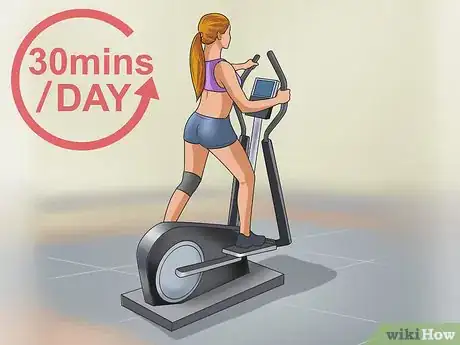

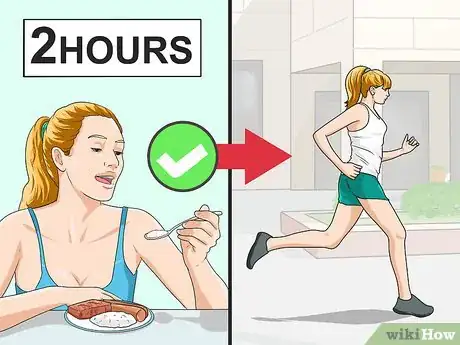

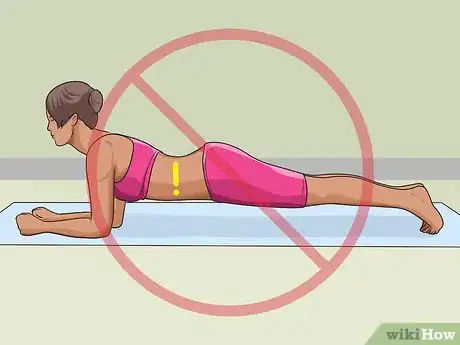


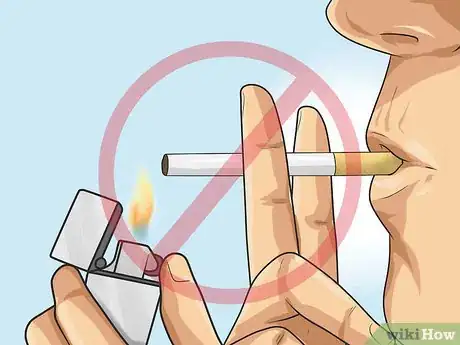

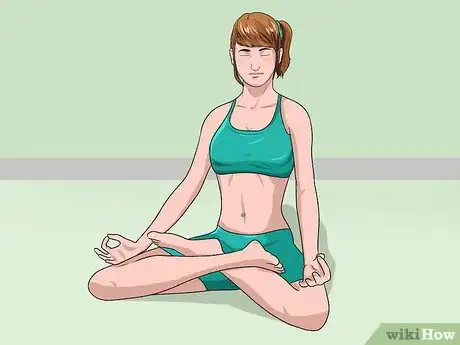

























































Medical Disclaimer
The content of this article is not intended to be a substitute for professional medical advice, examination, diagnosis, or treatment. You should always contact your doctor or other qualified healthcare professional before starting, changing, or stopping any kind of health treatment.
Read More...